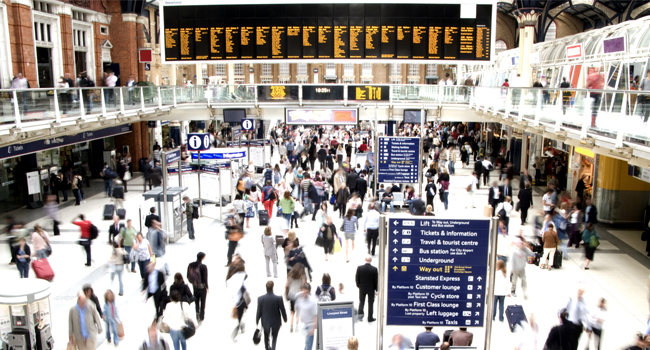
Surveillance: Debunking the Biggest Transport Security Myth
Why safe travel doesn’t have to mean slow travel
All transport hubs, whether consumer or commercial, face two significant challenges: keeping people and property safe, and ensuring that both pass from entrance to exit efficiently and economically.
A common view is that tackling one inevitably has a negative impact on the other, for example that increasing security measures in response to heightened threat levels, will always lead to slower passenger or cargo processing. According to global surveillance business Synectics, it’s a myth that needs debunking.
Attending this year’s Transport Security Expo taking place at Olympia in London (2-3 December), Synectics suggests that by enhancing situational awareness with intelligently integrated surveillance, transport hub operators have the opportunity to make significant improvements in both these important areas.
Chris Bishop, International Business Development Manager at Synectics, explains: “Whether discussing sea ports, railway stations, bus terminals or busy airports - identifying and responding to potential threats boils down to one thing. Awareness.
“Transport hubs operate a vast range of security, emergency and operational systems to protect people, goods and infrastructure. But monitoring these systems separately is time consuming, can be a significant draw on resources and does not afford operators a holistic view of the site in question. Data, though abundant in volume, is often fragmented.
“This is a situation that perpetuates transport security misconceptions, as a disjointed approach can (and often does) mean that increased emphasis on safety and security impacts negatively on operational efficiency, and vice versa.
“However, adopting an open architecture, intelligently integrated surveillance command and control platform to collate that data – enabling it to be monitored, controlled and (with the help of analytics) understood, in a single unified environment – dramatically improves situational awareness. This in turn facilitates multiple benefits across an entire site, without forcing compromise in any one specific area of operation.”
Some of the benefits that Synectics will be highlighting at Transport Security Expo include:
- Real time threat detection and improved response times
- Passenger bottleneck analysis and prevention
- Person of interest identification and tracking
- Improved interaction between security and passenger facing operational teams e.g. baggage claim, check-in and boarding desks
- Personnel verification and location awareness
- Improved workflow consistency and audit trails
At the show, Chris Bishop will also be presenting a seminar specifically for the aviation industry. Entitled “Four Success Factors and Drivers in Aviation Safety and Security”, the presentation will explore topics such as airport system integration opportunities, improved operational and security incident response based on real-time data and analytics, and future-proofing technology implementation.
In addition to discussing the practical benefits of systems integration and improved situational awareness, Synectics will be providing visitors to booth J30 with live demonstrations of relevant solutions in action. Solutions to be showcased include Synergy 3 command and control platform – specified by Jakarta’s Soekarno-Hatta International Airport - and COEX camera stations – recently ordered as part of a surveillance solution for 2 LNG carriers being built by a South Korean shipyard.
David Petrook, Commercial Director at Synectics, said: “Synergy 3 is ideally suited to the transport sector. It enables a wide range of sub-system integrations, and ensures that incident detection, response and reporting procedures comply with specific Standard Operating Procedures (SOPs). For transport hubs that want to address risk mitigation and operational efficiency, features such as GIS mapping and user-driven dynamic workflows are valuable tools. To be able to showcase these features, and demonstrate deliverable results, at such an important and highly respected event is a great opportunity.”
To further support transport operators interested in understanding and adopting surveillance technologies, Synectics has produced a series of reports and white papers with topics including at-sea navigation in ice-class conditions and airport management.